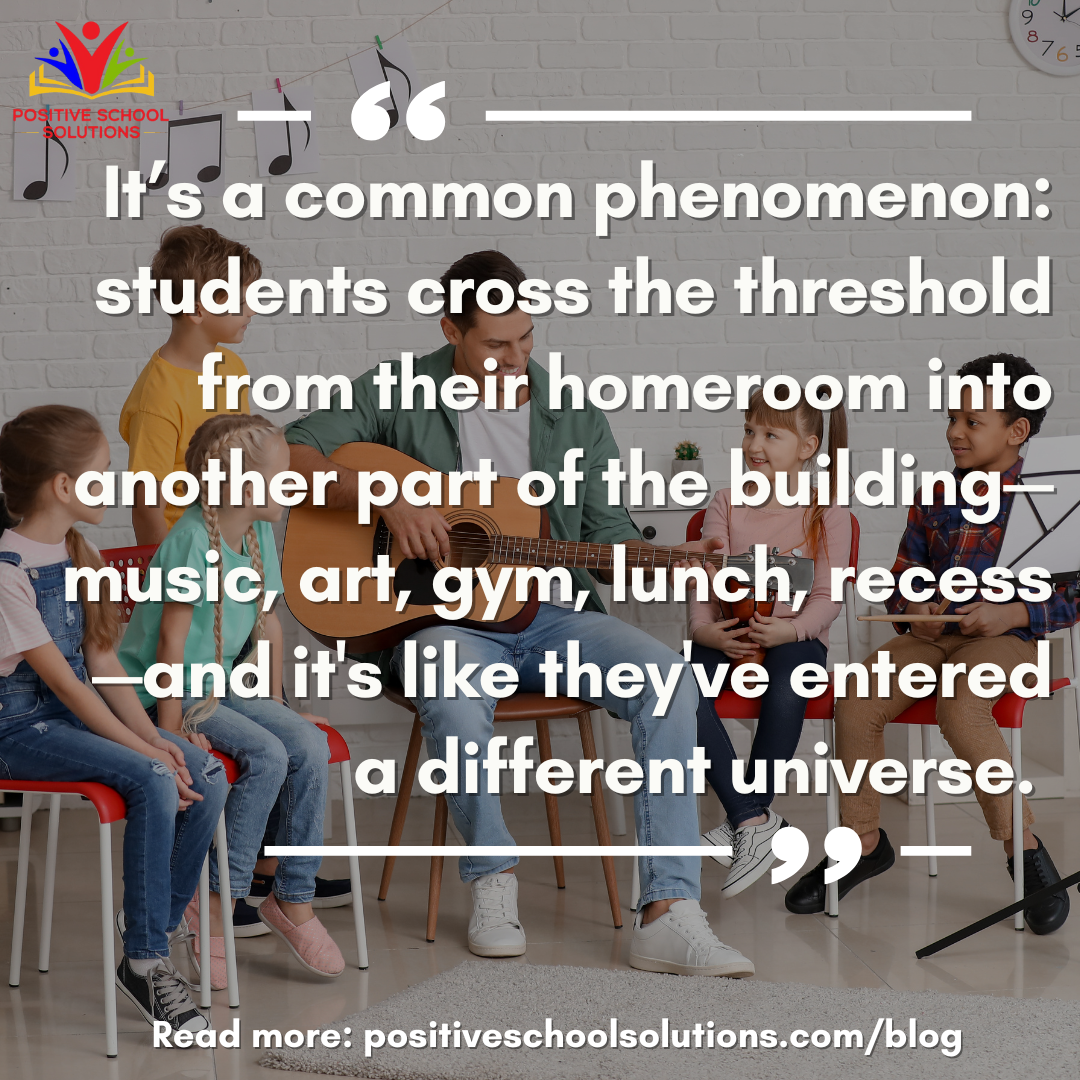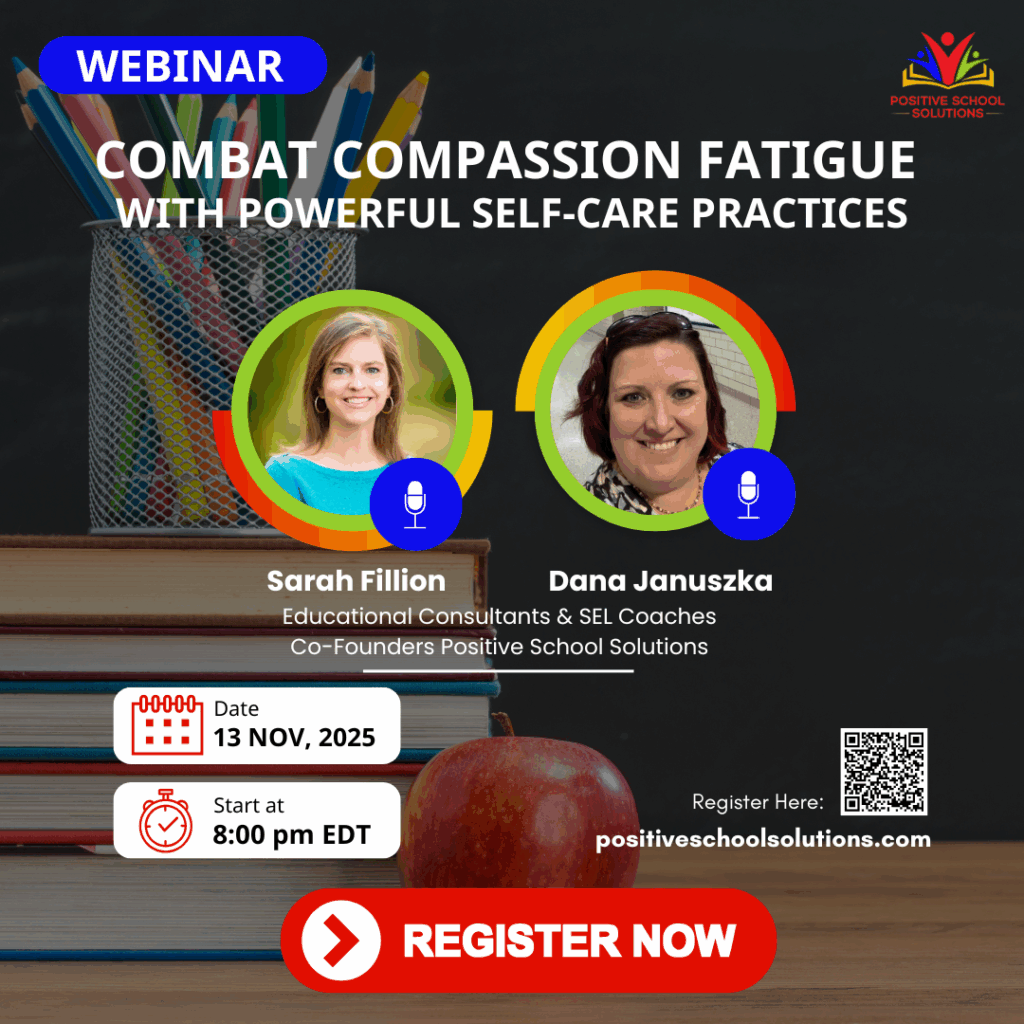I used to teach 5th grade.
We had first-block specialists.
And every Thursday, I knew it was going to be a rough day.
Fifteen minutes after the bell rang, my class would head off to Music. They were always excited—chatty, bouncy, buzzing with energy. But when I picked them up? The music teacher looked like he’d seen something. You know the look—wide eyes, forced smile, the kind that says, “I survived, but barely.”

In the 20 seconds we had for a passing conversation, he’d say it had been a rough class. And he wasn’t wrong—when the students came back to the classroom, they were wound up, unfocused, and often dismissive when I asked what happened.
For two months this happened, every Thursday, despite everything I tried: prepping them ahead of time, debriefing when they returned, practicing norms, reviewing behavior expectations, even doing role plays about how Music class should look, sound, and feel.
I was doing all the things—but something wasn’t clicking.
And then it hit me:
My students had adopted the Vegas mentality.
What happens in Music, stays in Music.
The Invisible Line Students Feel
Once I saw it, I started noticing it everywhere—not just in my own classroom, but in schools I visited, coached, and supported.
It’s a common phenomenon: students cross the threshold from their homeroom into another part of the building—music, art, gym, lunch, recess—and it’s like they’ve entered a different universe.
Their energy shifts. Their behavior shifts. And it’s not always in a way that supports learning or connection.
But here’s the thing: it’s rarely about respect.
It’s about familiarity.
It’s about relationship.
It’s about consistency.
In many schools, specialists see students once a week. Sometimes even less. The routines, expectations, and emotional bonds that develop in a daily classroom just don’t have time to take root in the same way. So, even with the best intentions, students experience those spaces as “different”—and often, that means the rules feel optional.
What Happens When Adults Connect?
Back in my classroom, I knew I couldn’t solve this alone.
So I talked to the music teacher. We didn’t have a ton of time, but we both agreed: something needed to change. We weren’t trying to overhaul everything—we just needed to show the kids that we were connected.
We started by choosing a few shared expectations and using the same language. Instead of “music rules” and “classroom rules,” we talked about our rules—how we treat people, how we participate, how we transition in and out of spaces. We both began referencing one another during class, reinforcing the idea that we were on the same team.
And slowly, something shifted.
The students started carrying our norms with them—across the hall, across subjects, across experiences. They knew what was expected, and more importantly, they knew we were united. The Vegas mentality? It started to fade.
So… What About Your School?
In schools that run smoothly across all spaces, there’s an invisible thread connecting adults. Students feel it. They know when staff are aligned.
If you’re noticing patterns—like behavior dropping during specials, transitions being tricky, or support staff feeling frustrated—it’s worth asking: Are we truly showing up as one team?
Are we building a culture where expectations are not tied to a specific space or adult, but are part of who we are as a community?
You don’t need a full culture reset to get started.
Sometimes, it’s as simple as asking your team a few thoughtful questions:
- Where do students seem to “let loose” or act differently—and why?
- Are there shared norms that could follow students throughout the building?
- Do all staff—specialists, aides, front office, support staff—feel like they have a role in shaping culture?
If the answer is “not yet,” then you’ve found your starting point.
This Is the Work Holistic PD Was Built For
At Positive School Solutions, we’ve helped schools untangle this exact dynamic again and again.
Holistic PD doesn’t just train teachers—it brings your whole staff together to create a culture of consistency, care, and collaboration. It helps schools replace silos with systems, so what happens anywhere in the building builds a stronger everywhere.
If this sounds like what your school needs, let’s talk.
You’ll walk away with clarity and concrete next steps.
And together, we can evict the Vegas mentality—for good.
Book a discovery call now.
Written by Sarah Fillion 2025


